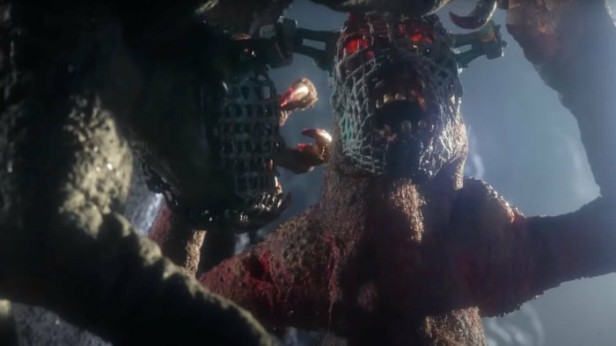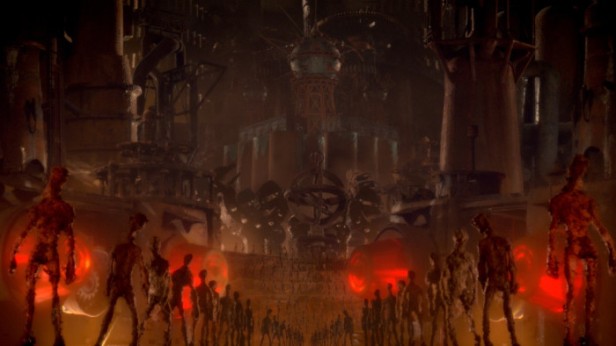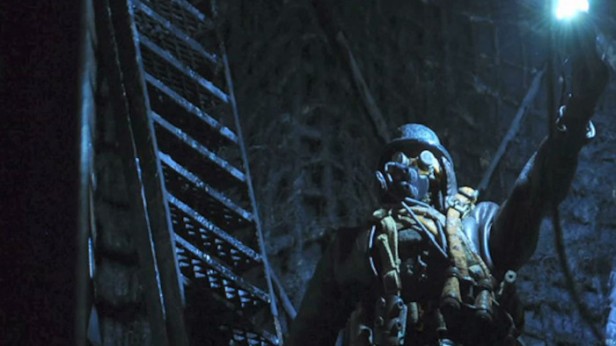For many years, Phil Tippett was one of the legends of stop-motion animation, debuting with the holographic chess scene in Star Wars (1977) and going on to participate in a huge number of crowd-pleasing genre films, Star Wars Episode V: The Empire Strikes Back (1980), Dragonslayer (1981) and RoboCop (1987) among them. In 1991, he was hired to work on Steven Spielberg’s Jurassic Park but the computer animation presented by Denis Muren was chosen to represent the dinosaurs instead of Tippett’s “go motion”, leading Tippett to exclaim “I’ve just become extinct!”
In the event, he hadn’t as he adapted to the new digital realm with ease, but it did spell trouble for a side project that he’d been working on for a year. A personal work made entirely using stop motion animation, Tippett had started work on it during downtime while he was working on RoboCop 2 (1990) but the rise of CGI led him to believe that stop-motion was a spent force and he shelved the project. But it proved to be an artform that wouldn’t go away and twenty years later, members of his staff at Tippett Studio suggested reviving the idea. Using his staff and film student volunteers keen for a film credit (“on the weekends I would get as many as 15 and 20 people coming round, he told The Guardian in 2021. “They didn’t all have the talent or skill, but I’d figure out the processes during the week. I had them do all the heavy lifting”), he set to work again on the film which would, after a successful Kickstarter campaign and more than a decade’s additional work, be released as Mad God.

And mad is the operative word here. Mad God turns out to be a delirious, surreal and sometimes baffling but always fascinating flight of fancy that turns out better than anyone, even, one suspects, Tippett himself, could have expected. If the director at one time had despaired for the future of stop motion (those were the days before Aardman Animation and a subsequent rejuvenation of interest in the form) then Mad God more than proves that there’s more than a little left in it yet.
What the story means is anyone’s guess. A mysterious figure in a long jacket and gas mask descends into a Stygian underworld in a diving bell, carrying with him a map and a suitcase. On his journey, the character, referred to only as “the assassin” in the credits (there’s no intelligible dialogue in the film’s 83 minutes), observing the many strange and often aggressive creatures that live n this blighted world before reaching a city populated by faceless drones. The assassin seemingly has a mission to kill the city’s monstrous ruler, his suitcase carrying a bomb and he appears to the latest in a long line of would-be killers, coming across a mountain of similar suitcases abandoned by previous assassins. His own bomb fails to go off and he ends up being operated on by a mad surgeon, apparently for the edification of a baying crowd watching on television. The surgeon and his nurse extract a larva-like creature, hooks the assassin up to a television set and the larva, now resembling a child, is given to a floating creature who takes it to the lair of an alchemist. The infant is liquidised and transformed into gold which is used as the basis of a new universe. Somewhere amid all this anarchy is cult film-maker Alex Cox as one of the only human characters, playing “the last human.”

All this probably meant something to Tippett but trying to discern any real meaning from Mad God is a fool’s errand. And it may even be beside the point. What really matters is the film’s dark and brooding atmosphere, it’s grim trip through an imaginary world where all the horrors and nightmares of our own world are vividly made flesh. It’s all wildly inventive and provocative, the work of a man who has absolutely nothing left to prove and who just let’s his prodigious imagination run riot, daring us to keep up with him and showing little patience with those who don’t. The closest point of comparison might be the films of Jan Svankmajer, thebolexbrothers or the Brothers Quay but such comparisons don’t really come close to explaining Mad God.
The look of the film is extraordinary – the underworld is a harrowing steampunk nightmare (dystopias rarely come as horrifically dystopian as this) with plenty of images that are designed expressly to shock – a filth encrusted, doll-like woman masturbating in a dank cell; an audience whooping it up at a live medical torture show; a restrained giant being force fed toxic waste; and much more besides. There are nods and tips of the hat to Starship Troopers (1997) (for which Tippett designed and animated the alien bugs) 2001: A Space Odyssey (1968), Eraserhead (1976), The Terminator (1984) and RoboCop but they just serve to further highlight how truly strange Mad God really is.

The world Tippett creates is so satisfyingly bizarre, so disturbing and so terrifying that it couldn’t be any further from the blockbusters that Tippett had spent his career working on if it tried. Imagine a meeting of creative minds between Hieronymus Bosch and David Lynch and you’ll be heading in the right direction though Mad God is such a singular vision that no comparison stands up. There was nothing in the work Tippett did elsewhere that suggested such a film was in him. One can’t help feeling a little cheated that it took him 30 years to finish it – had he been able to finish it sooner we might have had many years of this sort of thing to enjoy.
Mad God (available to stream on Shudder at the time of writing) is not a film to watch if you’re feeling emotionally fragile – it’s a draining and unremittingly grim parade of cruelty, horror and suffering but it’s none the less brilliant for all that. There’s a lovely moment near the end where we glimpse the new universe, a gorgeous, brightly coloured existence being grown in a large tube (though a place where there are still predatory giant spiders, albeit beautifully coloured ones) and we’re allowed to enjoy it for a few brief seconds before being dragged back into Hell again. It’s a brutal but strangely attractive film, the work of a true visionary (that’s a word that gets bandied about too often these days but it fits perfectly here) and a film that throws down another gauntlet for future stop-motion animators. One suspects that its cult status is already well established but that in years to come, as people go over it again and again vainly searching for some sort of meaning, that it’s only going to become even more exalted. And rightly so.